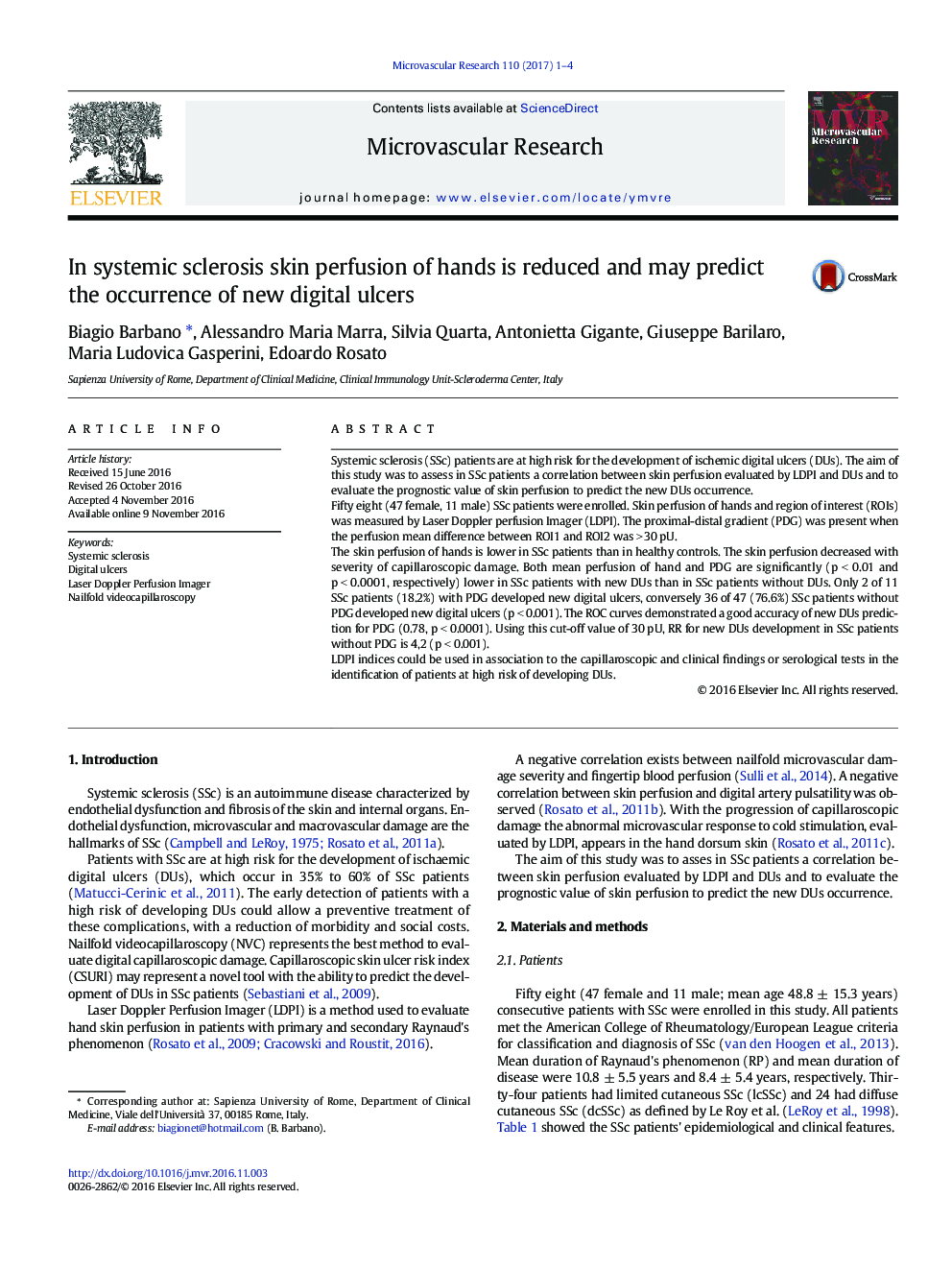| Article ID | Journal | Published Year | Pages | File Type |
|---|---|---|---|---|
| 5513761 | Microvascular Research | 2017 | 4 Pages |
â¢In SSc patients the severity of capillaroscopic damage is correlated to the skin perfusion.â¢Mean hand perfusion and proximal-distal gradient are significantly lower in SSc patients with new DUs than without DUs.â¢LDPI indices are a useful tool in the identification of SSc patients at high risk of developing DUs.
Systemic sclerosis (SSc) patients are at high risk for the development of ischemic digital ulcers (DUs). The aim of this study was to assess in SSc patients a correlation between skin perfusion evaluated by LDPI and DUs and to evaluate the prognostic value of skin perfusion to predict the new DUs occurrence.Fifty eight (47 female, 11 male) SSc patients were enrolled. Skin perfusion of hands and region of interest (ROIs) was measured by Laser Doppler perfusion Imager (LDPI). The proximal-distal gradient (PDG) was present when the perfusion mean difference between ROI1 and ROI2 was > 30 pU.The skin perfusion of hands is lower in SSc patients than in healthy controls. The skin perfusion decreased with severity of capillaroscopic damage. Both mean perfusion of hand and PDG are significantly (p < 0.01 and p < 0.0001, respectively) lower in SSc patients with new DUs than in SSc patients without DUs. Only 2 of 11 SSc patients (18.2%) with PDG developed new digital ulcers, conversely 36 of 47 (76.6%) SSc patients without PDG developed new digital ulcers (p < 0.001). The ROC curves demonstrated a good accuracy of new DUs prediction for PDG (0.78, p < 0.0001). Using this cut-off value of 30 pU, RR for new DUs development in SSc patients without PDG is 4,2 (p < 0.001).LDPI indices could be used in association to the capillaroscopic and clinical findings or serological tests in the identification of patients at high risk of developing DUs.
